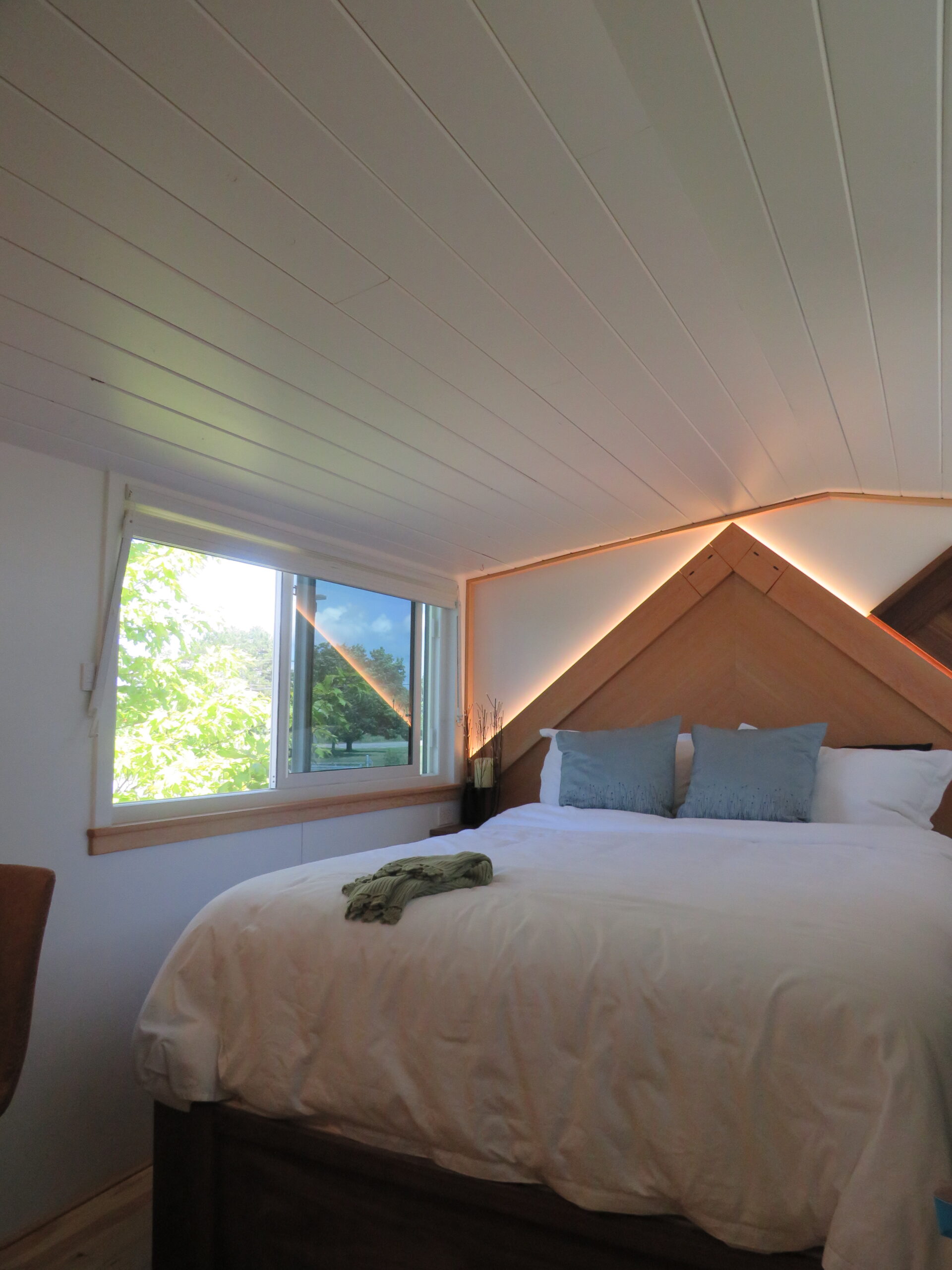
Get Inspired With These Tiny House Loft Interior Design Ideas
Tiny homes have taken over the housing world with their eco-friendliness and appeal to minimalists, but with a small living space comes the challenge of how to maximize it. One popular solution to save space is a tiny house with a loft, providing extra space without sacrificing square footage. If you’re in search of creative design ideas for your tiny home loft, you’re in the right place. In this article, we will showcase various design ideas and storage solutions that can work in your tiny house loft.
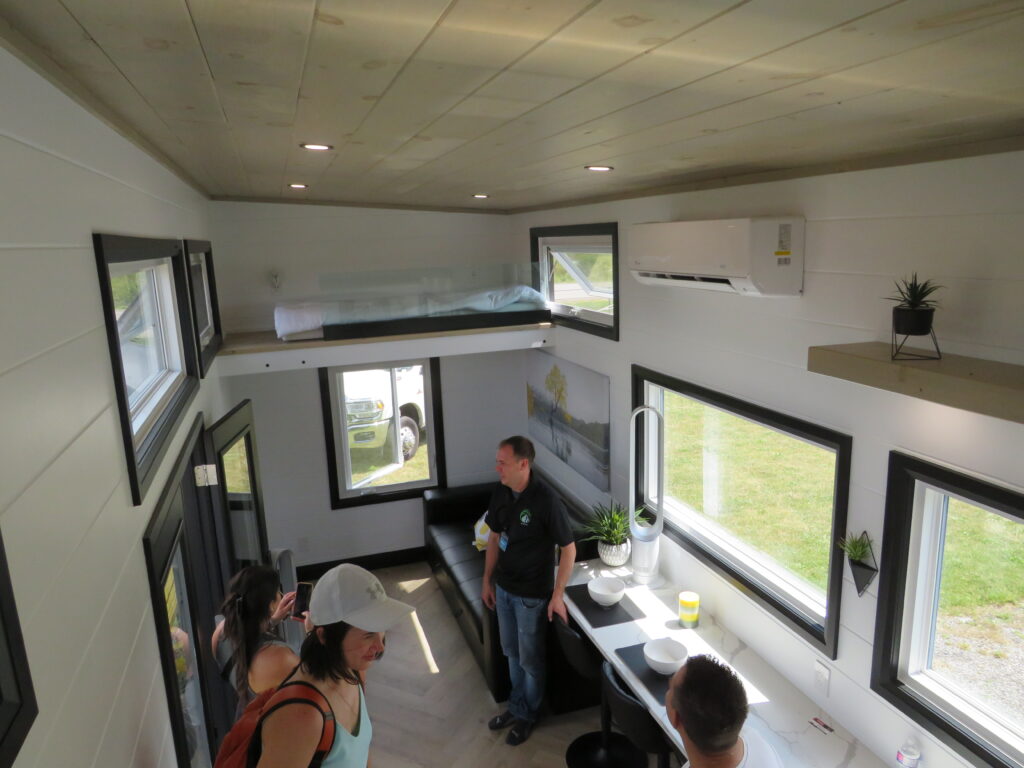
Let’s jump into how to spice up your living room / bedroom / dining room / kitchen when you have a single Tiny house loft!
- Floor Plan: The floor plan of your tiny home is an important factor in maximizing space utilization. When designing a tiny home, it’s necessary to consider the functions of every room and make the most of its square footage. Your tiny living space should be practical, but that doesn’t mean your tiny house design should be boring. Open space floor plans with loft areas provide an airy feeling without sacrificing storage space.
- Loft Bedroom: The loft bedroom is one of the essential features of a tiny home with a loft. It is where you can have your private sleeping area usually set on the upper part of your house. One way to make your loft area more functional is by having sliding doors that increase privacy while also providing an open concept design. Bunk beds are great space savers for tiny houses, especially if you’re living with a partner or have children.
- Natural light: When it comes to small spaces, it’s essential to have natural light to make the space feel more open. Skylights are a popular way to add extra natural light, and since it’s placed on the roof, you’re not sacrificing precious wall space. In addition to skylights, treehouse-like tiny homes are perfect for lounging, as it exposes the interior space to abundant natural light.
- Storage Solutions: Storage is vital in any house, especially a tiny home. Creativity in designing your storage space is a must in a small space. Open shelves are popular in tiny homes as it gives easy access to things that are commonly used. Barn doors are also an excellent storage solution for tiny homes as it saves space and adds a rustic touch to the interior design. Built-in storage under staircases and in the loft area is another clever storage idea.
- Functional Countertops: In a small house, the countertop is a multi-functional space that can serve as a dining or working area. Having an open countertop with storage spaces underneath is functional and practical. Extra counter space can be created by adding a drop-leaf and replacing a traditional dining table with a kitchen island that can serve as a workstation.
Conclusion:

Living in a tiny home with a loft presents a unique challenge, but with attention to design and functionality, it can become a cozy and inviting space that fits your lifestyle. Whether you’re looking for storage solutions, loft design ideas, or natural light solutions to make your tiny home feel more spacious, there are so many creative options to explore. The tiny house movement continues to grow, and for tiny home enthusiasts looking to build their space, these design ideas will inspire a comfortable and functional living area.
The best interior wall for a tiny house ultimately depends on your personal preferences and needs. However, there are a few popular options that are commonly used in tiny houses.
One popular option is drywall, also known as plasterboard or sheetrock. This is a cost-effective and easy-to-install option, making it a favorite among DIYers. Another popular choice is shiplap, which adds a rustic and cozy feel to the tiny house. Other options include reclaimed wood, stone veneer, and even repurposed shipping containers.
Tiny houses are known for their compact size, and as such, every bit of space is utilized to its fullest potential. One of the ways in which this is achieved is by incorporating a loft into the design, to ensure maximum usage of the square footage. While loft space is tight, it’s usually perfectly functional.
While it’s not a mandatory feature, a loft is a popular choice among tiny house owners. It allows for more living space and creates an illusion of larger square footage. Additionally, since most tiny homes are custom-built, including a loft can be considered a DIY project for those who enjoy personalizing their living spaces.
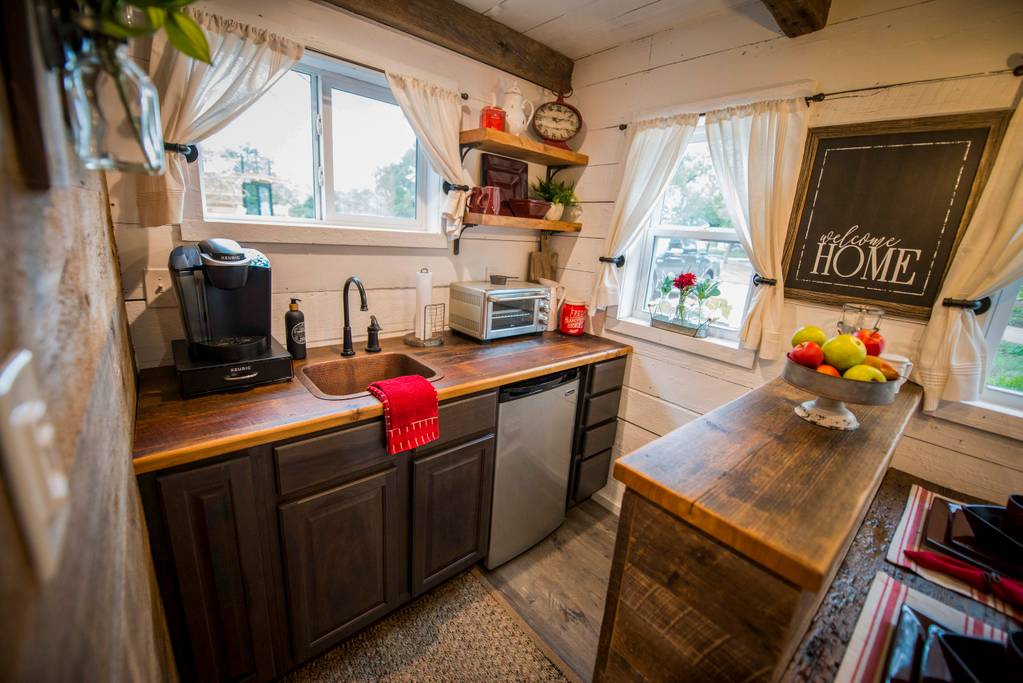
Smart Small Square Kitchen Remodeling Ideas for Tiny Homes
1. Embrace Open Shelving
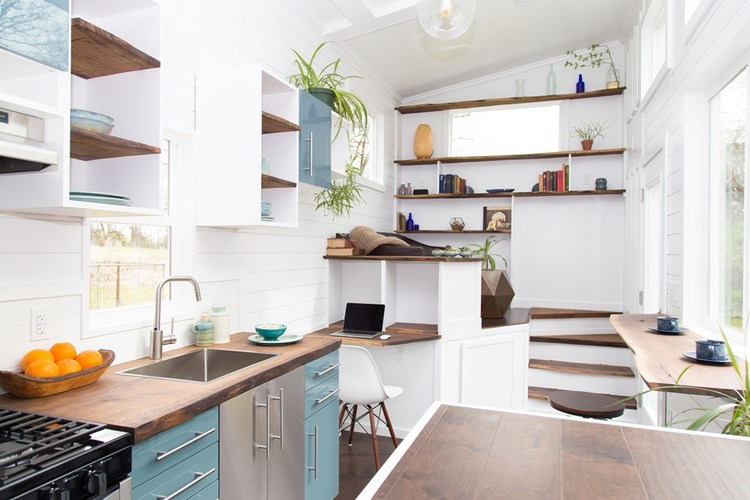
Maximize your small square kitchen‘s visual space by opting for open shelving instead of traditional upper cabinets. Open shelves give your kitchen an airy feel and create an illusion of more space. Display your colorful dishes, pots, and pans on the shelves, adding a touch of personality to your kitchen. You can also use baskets or bins to neatly store items while maintaining a clutter-free look. Consider adding hooks or small racks underneath the shelves for hanging utensils, mugs, or even small pots, further utilizing vertical space.
2. Choose Light and Bright Colors
Light and neutral colors can visually expand a small space, making it feel larger and more inviting. Opt for soft pastels, pale grey, or white kitchen walls. Or for your kitchen cabinets, walls, and countertops. These colors reflect light and create an open atmosphere. Consider adding a colorful tile backsplash or vibrant accents to inject personality without overwhelming the space. Light-colored tiles with subtle patterns can also add visual interest without making the space feel cramped.
3. Optimize Vertical Storage
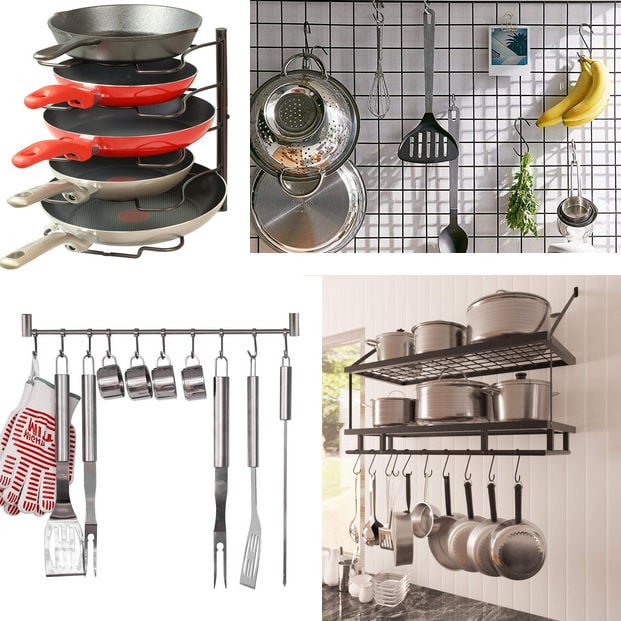
In galley kitchens where space is limited, make use of vertical storage space. Install hooks, pegboards, or magnetic strips on your kitchen walls to hang utensils, pots, and pans. Utilize the space above your cabinetry for storing infrequently used items or decorative pieces. Vertical storage keeps your butcher block countertops clutter-free and efficiently utilizes every inch of available space. To take advantage of underused wall space, consider installing a pegboard wall near your cooking area, allowing you to hang utensils, cutting boards, and even small pots.
4. Utilize Multi-Functional Furniture
Incorporate multi-functional furniture to maximize functionality without sacrificing style. Consider a drop-leaf table that can serve as both a dining area and additional workspace. Look for bar stools with built-in storage or nesting tables that can be tucked away when not in use. These versatile pieces help you adapt to different needs while saving space. For instance, a kitchen island on wheels can serve as a prep station, additional counter space, and even a dining table when needed.
5. Invest in Clever Storage Solutions
Tiny house kitchens require smart storage solutions. Install pull-out pantry shelves, corner lazy Susans, and under-cabinet organizers to optimize every nook and cranny. Use deep drawers for pots and pans, and add dividers for utensils and cutlery. A compact island with built-in storage can provide extra counter space and room for kitchen essentials. Additionally, consider installing hidden storage compartments within your prep space or inside cabinet doors to keep your tiny home kitchen essentials neatly organized.
6. Integrate In-Sink Dishwasher for Efficiency
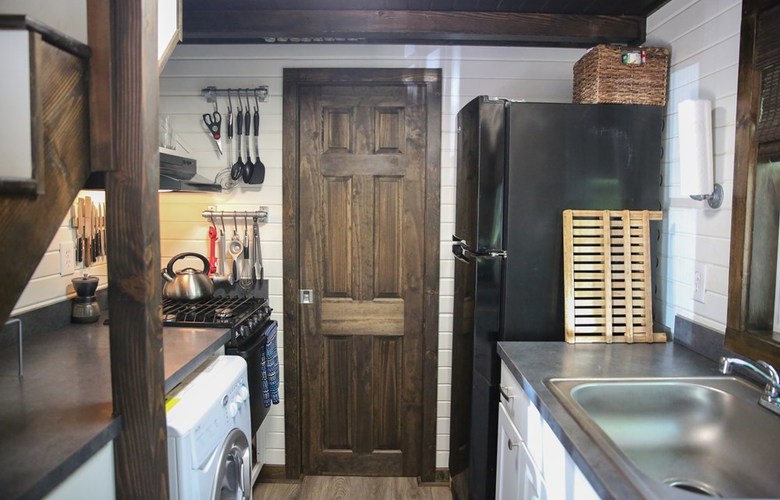
An in-sink dishwasher is a game-changer for any tiny home kitchen. This space-saving appliance fits neatly under your sink, allowing you to wash dishes without taking up valuable square feet. Its compact size makes it perfect for small kitchens, ensuring your space remains functional and clutter-free. With an in-sink dishwasher, you can keep your kitchen tidy while enjoying the convenience of a dishwasher. Not only does it save space, but it also reduces the time and effort required for dishwashing.
7. Choose Compact Appliances
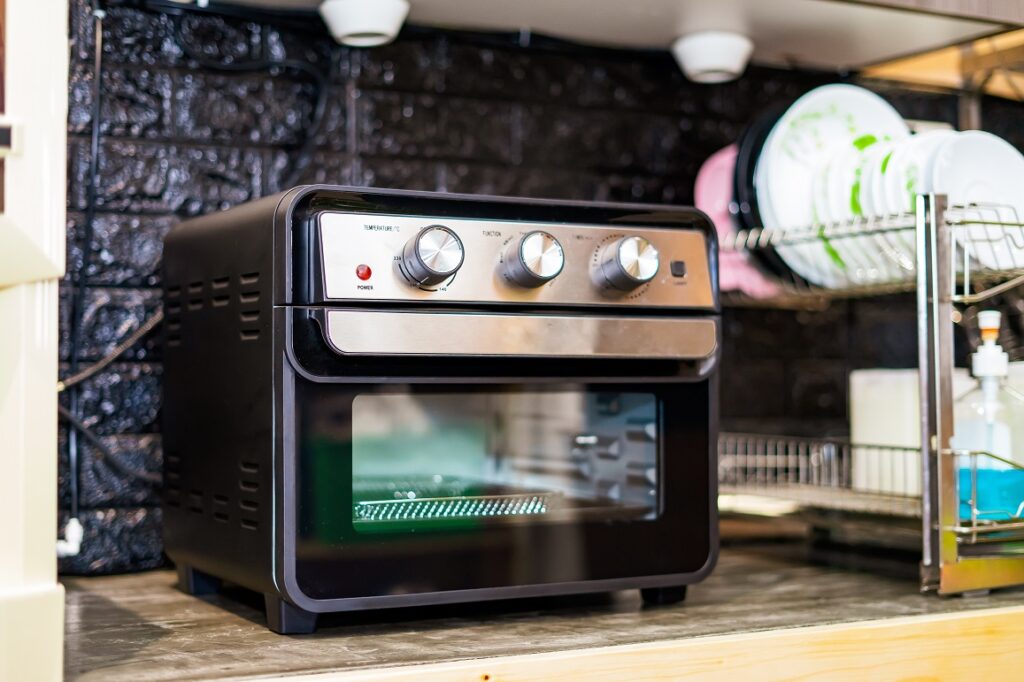
When selecting appliances, opt for compact and space-saving options. Consider a slim refrigerator, a combination microwave and convection oven, and a cooktop with integrated storage. Compact appliances are designed to fit seamlessly into small kitchens while providing all the functionalities you need for cooking and food storage. Look for stainless steel appliances with sleek designs and efficient features that enhance both aesthetics and functionality.
8. Reflective Surfaces and Mirrors
Incorporate reflective surfaces, such as mirrored backsplashes or glass cabinet doors, to add depth and brightness to your small kitchen. Mirrors visually expand the space and reflect light, making the area feel more open. Choose glossy finishes for countertops and backsplashes to create a sense of continuity and enhance the overall appeal of your kitchen. Additionally, consider placing a mirror strategically on a wall to create the illusion of additional space and light.
9. Utilize Under-Cabinet Lighting
Illuminate your kitchen with under-cabinet lighting to enhance its visual appeal and functionality. LED strip lights or puck lights installed under cabinets provide task lighting while creating a warm ambiance. This lighting not only brightens your workspace but also visually expands the area, making it feel more spacious. Adjust the lighting levels to suit different tasks, such as meal preparation or a cozy dinner with friends.
10. Keep the Layout Efficient
Opt for a kitchen layout that maximizes efficiency. The classic “work triangle” arrangement—connecting the stove, sink, and refrigerator—works well in small kitchens. Keep these essential areas close to each other to minimize unnecessary movement. A well-organized layout ensures smooth cooking and enhances the functionality of your space. Additionally, consider installing a foldable or pull-out cutting board near the sink for easy food prep.
In conclusion, remodeling a small square kitchen in a tiny house requires a thoughtful approach to space utilization and design. Embrace open shelving, light colors, and vertical storage to create an open and inviting atmosphere. Incorporating an in-sink dishwasher and other space-saving solutions can significantly enhance your kitchen’s efficiency and aesthetics. With clever storage solutions, multi-functional furniture, and reflective surfaces, you can transform your tiny kitchen into a functional and stylish culinary haven. Remember, the key to success lies in optimizing every inch of space and embracing innovative solutions that suit your lifestyle and needs. By combining creativity and practicality, you can DIY a small kitchen that feels spacious, efficient, and uniquely yours.
Tiny home living may come with the challenge of having a smaller kitchen, but that doesn’t mean you have to sacrifice on style and all the amenities. To make the most out of your space, it’s important to consider clever interior design ideas and features that can help you maximize storage. One great feature for tiny kitchens is a farmhouse sink, which not only adds a touch of warmth to the room, but also gives you extra counter space. Another option is to use vertical shelving that takes up minimal floor space and allows for better organization of kitchen tools and ingredients. When it comes to tiny kitchen design, modular custom storage solutions are your best bet for creating an efficient space that fits all your needs.
Remember that tiny kitchens don’t have to be a hindrance! With some thoughtful planning, you can create a kitchen that is both stylish and functional.
When it comes to remodeling a kitchen, the average cost can vary greatly depending on the size of your room and what upgrades you’re looking for. A tiny kitchen makeover typically ranges from $5,000 to $15,000. For smaller updates like fresh paint and new cabinet hardware or lighting fixtures you could be looking at around $2,500. For something more substantial like replacing lower cabinets and countertops, the cost could be closer to $10,000. If you’re looking for a complete retro makeover with new appliances, flooring and plumbing it could even reach as high as $20,000. Whether you’re looking for a full kitchen remodel or just some minor upgrades, know that there are plenty of options to fit any budget.
Finally, don’t forget to think outside the box if you’re working with a tiny kitchen – look into creative storage solutions like wall-mounted shelves, or even reconfiguring your existing space by replacing bulky furniture with slim cabinets that fit more seamlessly in the room. With a little planning and savvy shopping, you can make the most of a small kitchen.
Remember, even the smallest changes can have a big impact and you don’t need to break the bank to get your dream kitchen! With some smart budgeting and creative design ideas, you can create a beautiful space that fits your lifestyle.
When designing a tiny home kitchen, consider these features to create the most functional cooking space possible:
A small but efficient kitchen sink. This will save on countertop and prep space for larger items.
Plenty of workspace and storage solutions that maximize the small area.
Natural light coming in from windows or skylights can help make the space feel larger and brighter.
Incorporating floor-to-ceiling cabinets or shelves to maximize storage and free up countertop real estate.
Invest in multifunctional furniture like a pullout cutting board, an integrated table or a rolling cart. These items will allow you to use your kitchen more efficiently.
Small appliances like a mini fridge and convection oven can help you save space without compromising on features.
Finally, use bright colors or mirrored surfaces to create the illusion of more space in your tiny kitchen.
With some smart design choices, you can easily create an efficient and stylish tiny home kitchen!
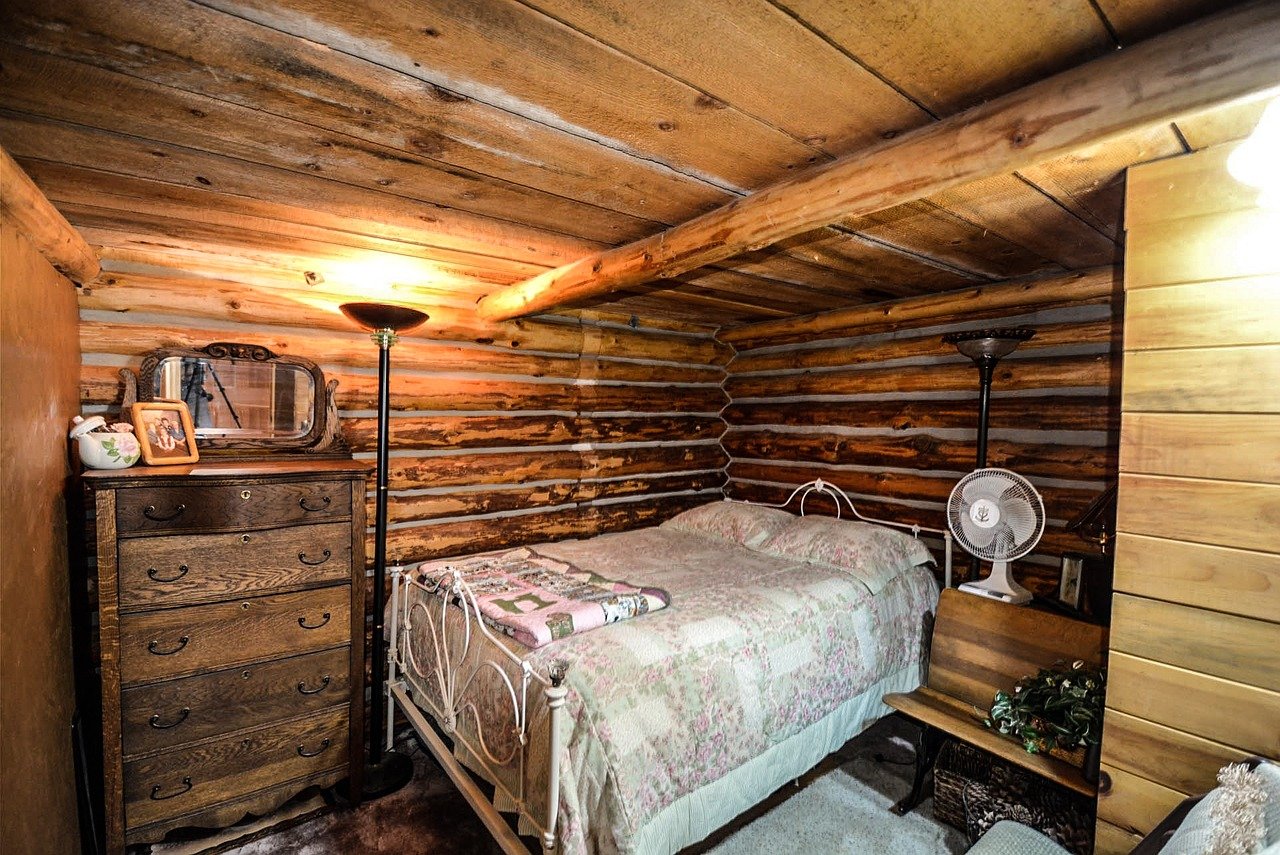
What to Expect When Hiring a Stylist for a Small Home: 4 Expert Insights
Are you considering hiring a stylist to transform your tiny house into a dream home? Whether it’s your kitchen, bedroom or even a storage closet, knowing how to maximize every square foot is crucial in a tiny home. Skilled interior designers can develop clever floor plans that create multifunctional, spacious-feeling areas within a finite footprint.
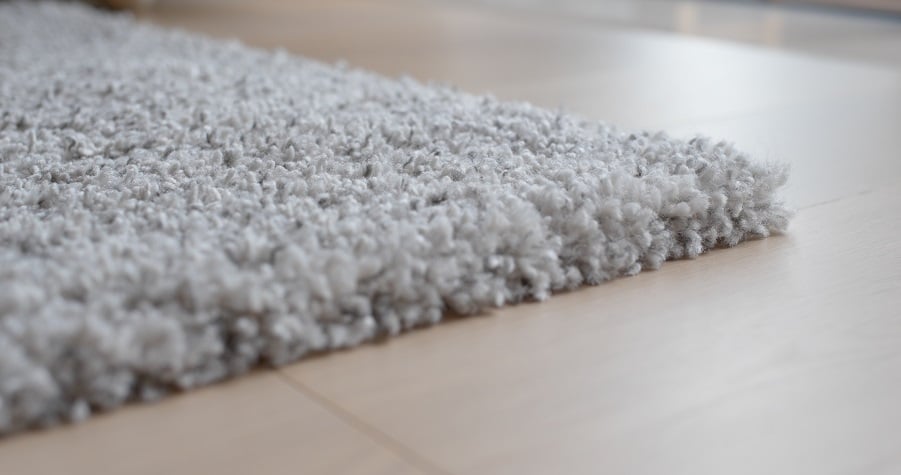
A Stylist Can Provide Inspiration For Your Tiny Home
Desiring a minimalist look for your tiny house? A stylist’s expert touch can help achieve an aesthetic defined by clean lines, muted colors, and meticulous organization. Talented stylists know how to declutter a living room, imbuing even a small space with an open and serene vibe. One of the keys to successful tiny home styling is creating an efficient, beautiful, and flow-maximizing floor plan. A stylist will conceptualize a house design making optimal use of each nook and corner and lay out the furniture to streamline the movement and enhance the feeling of spaciousness.
Additionally, DIYers hoping to personalize their tiny hideaways will also find stylists’ expertise invaluable. Stylists can guide you in DIY projects that create custom looks, like unique countertops made of reclaimed wood or a converted ladder as a bookshelf. And let’s not forget the importance of material selection in a small living space. Stylists, such as those from acclaimed interior design company Flitch, can recommend a range of items, including durable, easy-to-maintain countertops and other surfaces ideal for the rigors of living tiny house life. In essence, a professional stylist can transform your small house into a home full of design ideas that marry function and style using the various hacks and ideas they have adopted throughout their career. Whether you’re a DIY enthusiast or a minimalist at heart, the stylist’s focus on interior design can elevate your small space to new heights in livability and aesthetic appeal.
They Have More Experience Making Tiny House Design Plans
As you welcome a stylist to your tiny house, one of the first and arguably the most pivotal steps is the creation of a bespoke design blueprint. The stylist immerses themselves in your realm, absorbing the character of your existing home decor while concurrently sparking a dialogue about your ultimate vision. This is the inception of a thoughtful design journey, a woven pathway directing you to the threshold of your interior utopia. The stylist weaves a detailed tapestry factoring in your individual lifestyle, financial parameters, and sartorial tastes, sculpting a design framework that distinctly echoes your essence. A room’s existing inhabitants – your cherished furniture and decor – are not excluded. Instead, they are seamlessly melded into the floor space, shaping a brand-new narrative that merges your past, present, and future design worlds.
They Understand The Need For More Natural Light In A Tiny Home
For an enlightened interior designer, natural light is akin to a holy grail within the realm of small home design. It plays an unparalleled role in transforming tight spaces into bright and airy environments that feel larger. As the sun’s rays penetrate the home, they invoke a sense of expansiveness, magically aiding the illusion of added square footage. Natural light is a powerful tool; it can breathe life into dull corners and highlight architectural details without additional decor.
A Stylist Can Order And Arrange For Delivery Of Your Furnishings
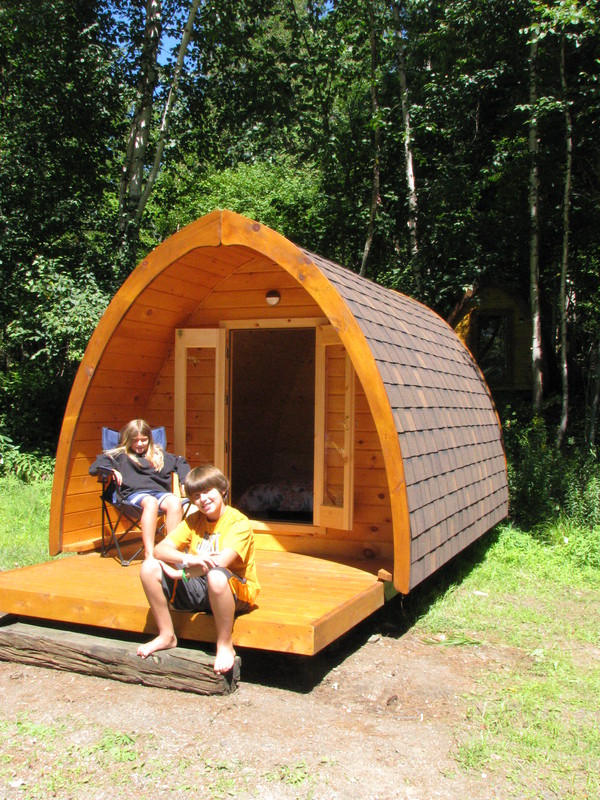
As your coordinator, your designer can step in, handling all the ordering and delivery details. Be it unique furniture items, attractive decor, or custom must-haves for your cozy home, your stylist will work together with you to select the best fit while ensuring everything arrives on time. This means you can plan your dream house with minimal fuss, safe in the knowledge that everything from your various showcases to the shelving storage space has been taken care of.
Whether you’re living in NYC or Texas, living big in a tiny house or shipping container home is an utterly achievable task with the right stylist. Just because you are part of the tiny house movement doesn’t mean that you have to miss out on everything that modern design offers.

Vikki Gerrard Of La Crosse Wi On Going Green With Tiny Houses
Are you looking for a way to reduce your environmental impact on the planet? Going green is more than just helping the environment; it’s also a great way to save money. One of the best ways to go green and save money simultaneously is by investing in a tiny house, says Vikki Gerrard of La Crosse WI. Tiny houses are an eco-friendly alternative that offers an affordable option without sacrificing comfort or style. In this blog post, we’ll explore why going small is better for sustainability, some tips for living sustainably in a tiny house, and inspiring examples of how people have made their tiny homes greener. So come on–let’s discover why going green with little house ideas sounds appealing!
Overview Of The Benefits Of Tiny Houses And Why Going Green Is Important
Tiny houses have become incredibly popular, and it’s easy to see why. Not only are they cute and cozy, but they also have several benefits for both the homeowner and the environment. One of the biggest draws of tiny houses is their sustainability. By being smaller, they require fewer resources to build, meaning they can often be made with recycled and eco-friendly materials. Their reduced energy usage makes them an attractive option for those looking to reduce their carbon footprint. But the benefits don’t stop there: living in a tiny house can also mean lower utility bills, more financial freedom, and a simpler, more fulfilling lifestyle. It’s clear that going green and embracing the tiny living movement can have a significant impact on the world and our daily lives.
Using Renewable Energy Sources For Powering A Tiny House
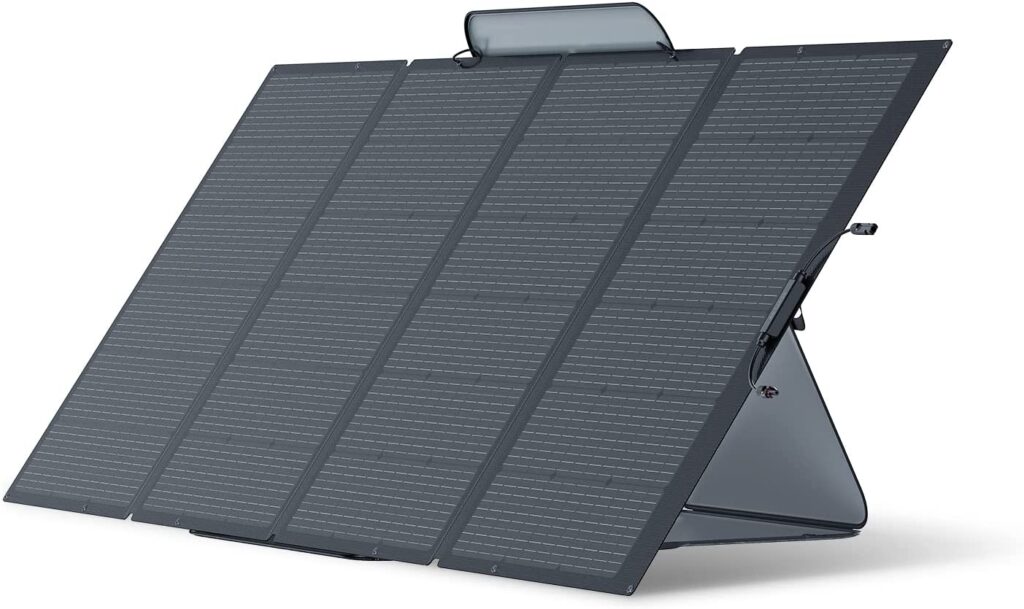
The tiny house movement has recently gained popularity as people seek more efficient, cost-effective, and sustainable ways of living. One of the best ways to achieve these goals is by powering tiny homes with renewable energy sources. There are plenty of options, from solar panels to wind turbines, depending on your location, climate, and energy needs. You can reduce your carbon footprint, save money on your energy bills, and enjoy the freedom and independence of generating your power. Whether you’re building your own tiny home or looking to retrofit an existing one, using renewable energy sources is an excellent way to achieve a greener and more fulfilling lifestyle.
How To Choose Eco-Friendly Building Materials
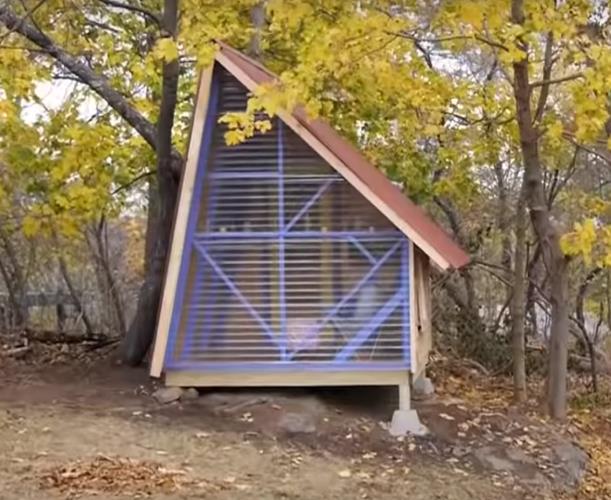
Choosing eco-friendly building materials can seem overwhelming, but taking the time to do so is crucial in reducing our environmental impact. When selecting materials, it’s essential to consider their life cycle, including how they’re produced, transported, and disposed of. Look for fabrics made from sustainable sources, like recycled or reclaimed materials, and those low in harmful chemicals. Additionally, consider purchasing materials locally to reduce their carbon footprint during transportation. Making conscious decisions about building materials can benefit the environment and promote healthier living for you and future generations.
Utilizing Natural Light And Ventilation Systems In Your Tiny House Designs
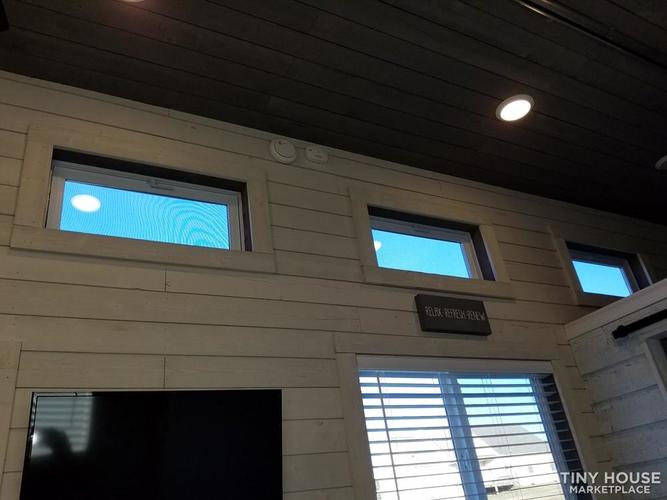
When living in a tiny house, utilizing natural resources like light and ventilation can make a massive difference in the overall design and functionality of the space. By incorporating large windows and skylights, you can flood your tiny home with natural light, making it more open and spacious. Additionally, including a ventilation system that utilizes natural airflow can provide plenty of fresh air and help regulate your home’s temperature. Whether you’re looking to create a more sustainable living space or just want to maximize the potential of your tiny house, incorporating natural light and ventilation systems should be at the top of your design list.
Tips On Creating An Efficient Kitchen, Bathroom, And Living Space
Creating an efficient kitchen, bathroom, and living space requires careful planning and a few tips and tricks. For instance, utilizing vertical space is a great way to save floor room while still having everything organized and easy to access. Adding storage options such as shelves, hooks, or containers can significantly decrease clutter and increase space. To make a bathroom more efficient, choosing dual-purpose fixtures such as a mirror cabinet or a towel rack with shelves can save room while providing essential functions. In the living room, having multi-functional furniture like a sofa bed or a coffee table with storage can create extra space for relaxing or entertaining. With these tips and more, you can create a functional and aesthetically pleasing area.
The Environmental Impact Of Smaller Homes And How They’re Helping To Reduce Carbon Footprints
With a growing concern for the environment, many homeowners are turning to smaller homes as a solution to reducing their carbon footprint. These tiny homes take up less space, use fewer resources to build, and require less energy to heat and cool. By downsizing, homeowners can significantly decrease their environmental impact while saving money on utilities. Additionally, smaller homes often encourage a simpler lifestyle and can promote a closer connection to nature. As the world seeks sustainable solutions to environmental issues, the popularity of smaller homes continues to grow.
Conclusion
Although it may require more upfront effort and planning, Vikki Gerrard of La Crosse WI says that tiny houses can inspire living spaces that reduce the environmental impact of traditional homes. From choosing eco-friendly building materials to harnessing renewable energy sources for powering homes, there are plenty of ways to make these miniature dwellings environmentally conscious. With proper design, efficient electrical and ventilation systems, and an emphasis on natural light, we can all take action towards creating a sustainable future by going green with tiny homes. It’s essential in mitigating climate change’s effects and helping create a healthier planet. So why not use this opportunity to join the tiny house movement while making a positive difference?